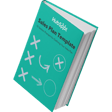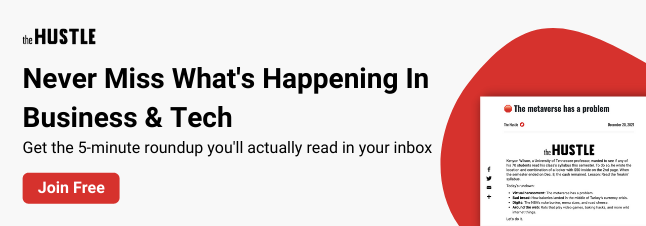Whether you call it being “in the zone,” “plugged in,” or in a “flow state,” it all comes down to the same thing: focus.
And it’s something that’s not easily won. With a barrage of digital distractions from social media to push notifications, compounded by the many demands of everyday life, finding your flow can be challenging.
Luckily, there are science-backed techniques we can use to find focus more easily and stay concentrated for longer.
Here, Dr. Sahar Yousef, a cognitive neuroscientist and lecturer at UC Berkeley, shares practical tips for limiting distractions, building routine, and maximizing deep work.
1. Build Cognitive Associations
Yousef says that the reason so many people had difficulty focusing on work at the beginning of the pandemic was because of cognitive associations: Your couch had previously been a place to watch trashy TV shows and zone out, and overnight became the setting for your most important meetings.
The reason that felt so jarring was because your brain associated your couch with rest and free time, and was programmed to relax and stop thinking of work upon seeing it. But you can use cognitive associations to your advantage when trying to focus quickly.
A simple cognitive trigger? Music.
“I highly recommend that folks create an association with a music playlist that will be your flow or focus trigger,” she says. “Opt for music with either no lyrics at all or lyrics in a language that you don’t understand.”
Once you’ve picked your playlist — Yousef opts for Swedish techno music — listen to the same playlist every time you sit down to do focused work; never listen to it when you’re relaxing or doing anything else.
This will eventually train your brain to quickly enter a flow state whenever it hears the music you’ve built an association with.
Yousef recommends music as it’s portable and accessible, but cognitive associations also work with your other senses. Smell, she says, is particularly powerful, so the work-from-home crowd can benefit from a dedicated flow-state candle.
2. Ready Your Space
With the goal of getting focused, the best place to begin is your physical space, says Yousef. Whether you work from home, have a hybrid setup, or are in the office full time, there are changes you can make to promote concentration.
Unfortunately, we start out at a disadvantage: “The human brain is hard-wired to constantly scan the environment for any kind of salient stimulus,” says Yousef.
A 2018 Harvard Business School study found that open offices had a negative impact on human collaboration, and that instead of talking to one another, workers actually tried even harder to achieve quiet and privacy. This is because we crave the ability to focus and enter a flow state, and constant stimuli in an office setting can make that impossible.
Consider visual and auditory distractions and the ways you can eliminate them. For visual distractions in the office, opt to work from a cubicle if possible, or purchase or make your own dividers (simple cardboard would do) so that you can’t see all the movement of the office from your desk. Use noise-canceling headphones to handle the audio component.
At home, also try to eliminate as many distractions as possible. Keep your desk clean of all items except those you need to do your work, shut the door if possible, and shut off any background noises like TVs or open windows.
If you have roommates or a significant other who works from home, the same rule applies — try to position yourself so that you can’t see their movements.
3. Practice Digital Hygiene
Arguably harder than cleaning up your office is cleaning up your notifications in an always-on digital world.
“Humans are not designed for constant distraction and interruption,” says Yousef. “Which means we are struggling as a species in the 21st century with our technological reality and how many incessant interruptions and distractions we’re expected to deal with on a daily basis.”
She says your first order of business — and something she practices herself — is to conduct an audit of your notifications. Look at email, Slack, social media, and text messages, and eliminate push notifications as entirely as possible. Ideally, set everything to “Do Not Disturb” and let just your emergency contacts come through.
In Gmail and Outlook, start employing the VIP inbox feature, which allows you to dictate whose emails get through, while lower-priority tasks can be routed to your standard inbox.
“The default settings of all of our technology is not here to actually help you be more productive, even if it is a productivity tool,” says Yousef. “The settings need to be updated: The only notification that should be allowed is one that is more important or urgent than what you are working on.”
Another simple way to clean up your digital environment? Put your phone in another room or out of sight while you’re working. Even face down on your desk, seeing your phone can impede your flow.





